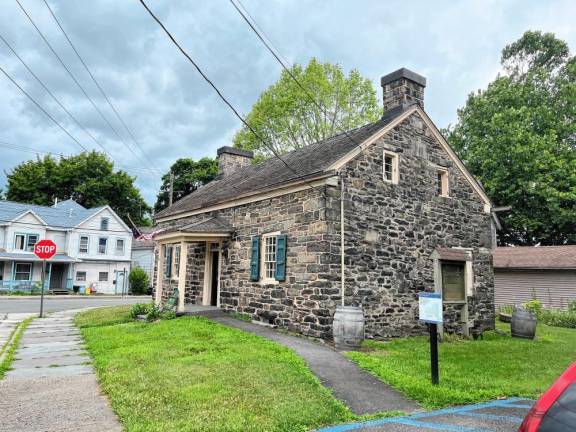
This past weekend we went to Port Jervis, N.Y., for an open house at Fort Decker.
Port Jervis is immediately over the border from Sussex County, and the fort is in town near the Delaware River.
As Sussex County residents, this is a nice trip over the highest point in New Jersey, with beautiful vistas of our great land and with a good look at our neighbors.
As Sussex County residents, it is a way to reflect on earlier days, times before our United States existed. Times when we stood on the frontier of the British colonies.
There were great threats present. Not only were the roaming bears, fierce wildcats and howling wolves a problem, the French and Indian War was of great concern.
In the larger world, the English and French were at war, especially in Europe in the Seven Years War. This extended to the North American continent, where the lands that the French and English were occupying were in question.
The First Peoples were here, being pushed about by the pioneers and settlers moving onto land, and the frontiersmen were hunting fur and game in the interior. Iroquois, Mohawk and others of the Algonquin nations were taking sides with the Europeans.
Scattered skirmishes and horror-filled tales of scalpings and abductions abounded.
Forts were built to defend our territory here. As the war continued, by 1758, there were nine forts or blockhouses extending from today’s Port Jervis and the Neversink Valley down to Belvedere, where four more smaller posts were along the Pequest River.
Jonathan Hampton was a quartermaster for the colonial government. He documented many of these, which appeared as log cabins, blockhouses and palisaded areas.
These were compounds where militia might be positioned or to which locals could run in case of an attack.
You can have a wonderful journey along the essence of our protective shroud from those days before and during the Revolutionary War.
A car trip from, say, Port Jervis down Old Mine Road will go by many of these and run beside the majestic Delaware River.
You may come across the large stone home and fortress known as Van Campen’s Inn. This is a place where thousands of Gen. John Sullivan’s troops gathered in 1779 before their expedition into Pennsylvania and upper New York state and where several New England delegates were said to have stayed on the way to Philadelphia for the Continental Congress.
This makes for a wonderful day trip along the extreme western boundary of Sussex County.
What today is mainly out of mind, this network of paths and buildings and forts, was a strong sentinel of protection for the citizens of Sussex County.
Bill Truran, Sussex County’s historian, may be contacted at billt1425@gmail.com